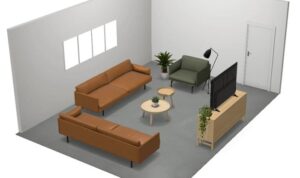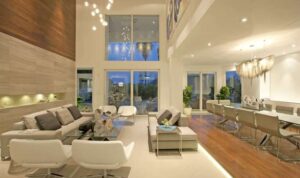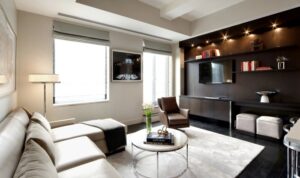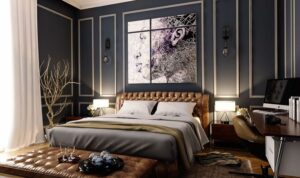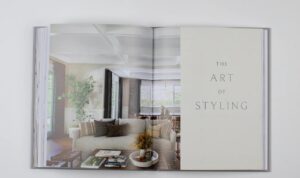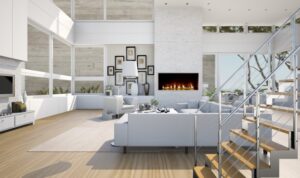Embark on a journey into the realm of decoration design, where creativity meets functionality to transform living spaces. From color schemes to furniture selection, this captivating discussion delves into the art of creating aesthetically pleasing rooms that reflect personal style and preferences.
Discover the key elements and trends that shape modern decoration design, along with practical tips for beginners looking to elevate their decor game without breaking the bank.
Importance of Decoration Design
Decoration design plays a crucial role in transforming a space into a harmonious and visually appealing environment. By carefully selecting colors, textures, and decorative elements, designers can create a cohesive look that ties the room together.
Enhancing Aesthetic and Ambiance
Decoration design has the power to enhance the overall aesthetic and ambiance of a room. Through strategic placement of decor items, lighting fixtures, and furniture, designers can create a welcoming and comfortable atmosphere that aligns with the desired mood of the space.
Reflecting Personal Style
One of the key functions of decoration design is to reflect the personal style and preferences of the individual or organization inhabiting the space. Whether it's through bold colors, eclectic patterns, or minimalist decor, the design choices made can showcase the unique identity and taste of the occupants.
Elements of Decoration Design
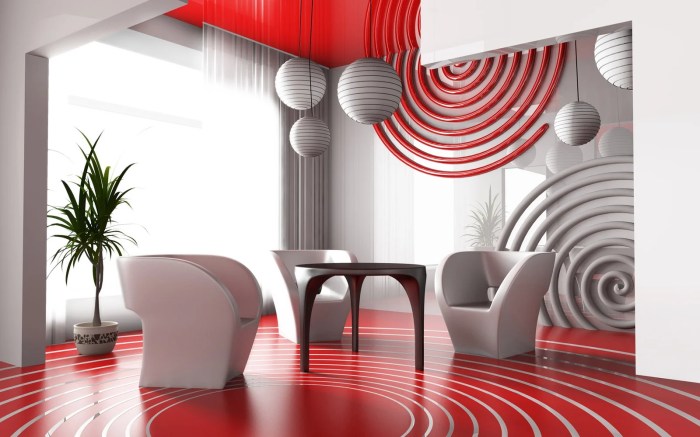
When it comes to decoration design, several key elements play a crucial role in creating a cohesive and visually appealing space. These elements include color, texture, pattern, and lighting, all of which work together to establish the overall aesthetic of a room.
Color
Color is perhaps one of the most important elements in decoration design. Different colors can evoke various emotions and set the mood of a space. For example, warm tones like reds and oranges can create a cozy and inviting atmosphere, while cool tones like blues and greens can promote relaxation and calmness.
Combining complementary colors or using a monochromatic color scheme can help achieve a harmonious look in a room.
Texture
Texture adds dimension and visual interest to a space. Incorporating a mix of textures such as smooth, rough, soft, and shiny can create a dynamic and layered design. For instance, pairing a plush velvet sofa with a sleek glass coffee table can add contrast and depth to a living room.
Pattern
Patterns can inject personality and style into a room. Whether it's through bold geometric prints, delicate florals, or classic stripes, patterns can be used to create focal points or add visual movement to a space. Mixing different patterns in varying scales can result in a visually stimulating yet balanced design.
Lighting
Lighting is essential for setting the ambiance and highlighting key elements in a room. Natural light can enhance the colors and textures in a space, while artificial lighting fixtures like chandeliers, wall sconces, or floor lamps can provide both functional and decorative illumination.
Layering different types of lighting sources can create a well-lit and inviting environment.
Furniture and Accessories
The selection of furniture and accessories plays a significant role in the overall decoration design. Choosing pieces that complement the color scheme, texture, and style of the room can tie everything together cohesively. For example, a contemporary leather sofa paired with metal accents can enhance a modern aesthetic, while a vintage wooden table with ornate detailing can add character to a traditional space.
Trends in Decoration Design
Decoration design trends play a crucial role in shaping the aesthetics of our living spaces. From minimalist to bohemian styles, these trends influence how we decorate our homes and create a harmonious environment. Let's explore some of the current trends in decoration design and how they impact interior design as a whole.
Minimalist Style
Minimalism continues to be a popular trend in decoration design, characterized by clean lines, simple color palettes, and decluttered spaces. This style focuses on the concept of "less is more," creating a sense of calm and tranquility in the home.
Bohemian Style
Bohemian or boho style embraces a more eclectic and free-spirited approach to decoration design. It often incorporates vibrant colors, mix-and-match patterns, and a variety of textures to create a cozy and inviting atmosphere.
Scandinavian Style
Scandinavian design emphasizes simplicity, functionality, and minimalism. It typically features neutral colors, natural materials, and plenty of natural light to create a warm and inviting space. This style is known for its clean and uncluttered aesthetic.
Color Schemes, Materials, and Patterns
In contemporary decoration design, popular color schemes include soft pastels, earthy tones, and monochromatic palettes. Materials such as wood, metal, and natural fibers are commonly used to add texture and depth to the space. Patterns like geometric prints, floral motifs, and abstract designs are also prevalent in modern decor.
Evolution of Trends
Trends in decoration design evolve over time, often influenced by cultural shifts, technological advancements, and societal changes. These trends not only impact individual homes but also set the tone for the broader interior design industry. As tastes and preferences change, designers adapt and innovate to create fresh and inspiring spaces for living.
Practical Tips for Decoration Design
When it comes to decoration design, beginners often feel overwhelmed with where to start. Here are some practical tips to help you approach decoration design in your own spaces, balance different elements effectively, and enhance your design without breaking the bank.
Approaching Decoration Design
- Start by defining your style and vision for the space. Consider what colors, textures, and themes you are drawn to.
- Take inspiration from design magazines, websites, and social media platforms to gather ideas and create a mood board.
- Consider the function of the space and how you can optimize it for both aesthetics and practicality.
Balance Different Elements
- Focus on creating a sense of harmony by balancing colors, patterns, and textures throughout the space.
- Use the 60-30-10 rule: 60% of a dominant color, 30% of a secondary color, and 10% of an accent color to create a cohesive look.
- Mix different styles and eras to add visual interest, but make sure they complement each other.
Budget-Friendly Enhancements
- Shop for second-hand furniture and decor items at thrift stores, flea markets, or online marketplaces to find unique pieces at a fraction of the cost.
- DIY projects can be a cost-effective way to personalize your space. Consider painting furniture, creating artwork, or repurposing items for a custom look.
- Focus on investing in key pieces like a statement rug or lighting fixture to elevate the overall design without overspending on every detail.
Closure
In conclusion, decoration design is a powerful tool that allows individuals to express themselves through their living spaces. By understanding the importance of cohesive design, exploring current trends, and implementing practical tips, anyone can create a stylish and inviting home that truly reflects their personality.
Query Resolution
How does decoration design enhance the ambiance of a room?
Decoration design plays a crucial role in setting the tone and mood of a space through the careful selection of colors, textures, and lighting.
What are some popular trends in decoration design?
Current trends include minimalist, bohemian, and Scandinavian styles, each offering a unique approach to interior design.
How can beginners balance different elements in decoration design effectively?
Beginners can achieve balance by experimenting with different elements and gradually refining their design choices based on what resonates best with their personal style.
Are there budget-friendly ways to enhance decoration design?
Affordable options like DIY projects, thrift store finds, and strategic use of accessories can significantly enhance decoration design without exceeding your budget.

